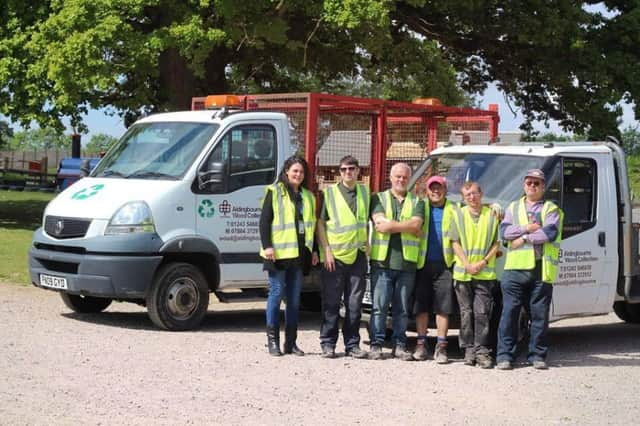How The Aldingbourne Trust helped save 300 tonnes of wood waste from landfill


They’ve been working with Community Wood Recycling, a network of Independent Wood Recycling Centres coordinated by the National Community Recycling Project, to make sure our wood is reused, rather than going straight to the landfill.
The Wood Recycling team in charge of the project, led by Brian Alden, is celebrating after a particularly busy period.
Advertisement
Hide AdAdvertisement
Hide Adanaging director at the Aldingbourne Trust, Sue Livett, said: “We have saved over 300 tons of waste timber going into the landfill, which is the equivalent to about 34 double decker buses.”
Once the team has the wood, they make full use of it. All the wood is stored on site, at the county centre itself and it’s all used as efficiently as possible.
Wood that is not suitable for the trust’s assortment of handmade garden ornaments is sent to the on-site biomass boiler to help provide eco-friendly heating across the site.
The group also receives regular donations from a nearby scaffolding company, which donates used wooden planks, perfect for use in the garden.
Advertisement
Hide AdAdvertisement
Hide AdOne happy customer, Shelley Moore from Worthing, said: “We love our scaffold fences as they give a quirky, recycled edge to our garden; great value for money and we are supporting a charity at the same time - thank you.”
The Aldingbourne Trust, which helps people with learning disabilities or autism lead independent lives, is committed to being as environmentally friendly as possible.
Not only does it raise funds by selling eco-friendly goods sourced and produced by the Wood Recycling Team, their dedication to the environment extends to their new initiatives, too.
Its newly opened Quarry building, for example, is covered in wood shingles with a higher insulation value than standard building materials, helping it save money- and fuel- on heating costs.
Advertisement
Hide AdAdvertisement
Hide AdThe decking outside the building has been made from recycled tyres, to avoid contributing to landfill, and the toilets operate on a rainwater harvesting system, to help avoid meaningful water wastage.
Even the electricity in the Quarry building is environmentally sourced. The roof is equipped with solar panels, which feed into a central grid and the building’s design helps maximise natural light, reducing the need for electricity.